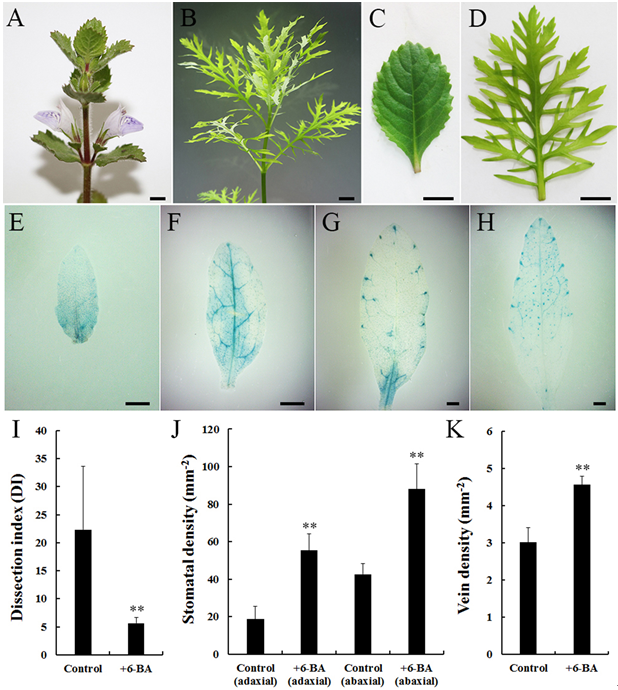
Newsroom
Scientists Established First Efficient Transformation Protocol for Hygrophila difformis (Acanthaceae)
Plants show morphological differences in leaf form in response to changes in surrounding environment, a phenomenon called heterophylly. Heterophylly provides an ideal process to understand mechanisms by which plants adapt to environmental changes. Even though it is widely seen in nature, the molecular mechanism behind it is poorly understood due to the lack of suitable models.
A research team led by Prof. HOU Hongwei from Institute of Hydrobiology (IHB) of Chinese Academy of Sciences (CAS) discovered an aquatic plant Hygrophila difformis (Acanthaceae) as an ideal model for heterophylly study. They reported the successful induction of callus, shoots and the establishment of an efficient stable transformation protocol as mediated by Agrobacterium tumefaciens LBA4404 in H. difformis.
Using this developed protocol, they transformed a cytokinin report construct (TCS::GUS) into the plant and detected the cytokinin signals in H. difformis. In combination with exogenous cytokinin application and endogenous cytokinin analysis, they revealed an important role of cytokinin in the regulation of leaf shape in heterophylly.
The development of the first efficient transformation protocol for H. difformis brings a convenient tool to study the molecular mechanism of heterophylly. The finding was recently published in Plant Cell Reports.

(A-B) H. difformis grown in terrestrial (A) or submerged (B) environments. (C) Terrestrial leaf. (D) Submerged leaf. (E-H) GUS staining of leaves from plant transformed with TCS::GUS report construct. The youngest is at the left, and the oldest leaf is at the right. (I-K) leaf morphology upon control and CK (6-BA) treatment. (I) Dissection index (DI); (J) Stomatal density; (K) Vein density. Bars=1 cm in (A)-(D). Bars=1 mm in (E)-(H). (Image by IHB)